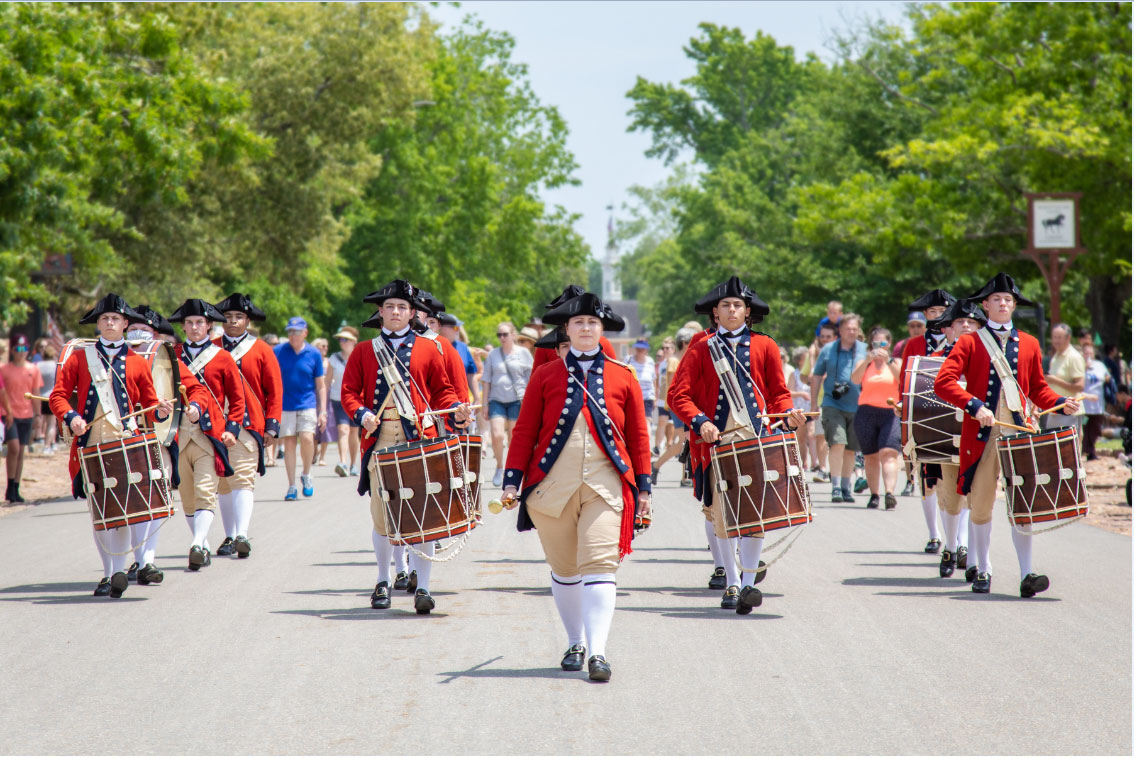A quintessential piece of the Colonial Williamsburg experience is the Fifes and Drums. Visitors to the Historic Area can see our Corps marching in rank down Duke of Gloucester Street to the beating drums and trilling fifes.
What started 65 years ago as four high school students playing “Yankee Doodle” at a Fourth of July celebration has since blossomed into two full Corps of local students who perform more than any other youth Fife and Drum Corps in the country. These students keep alive an even longer tradition of military music that dates back centuries.
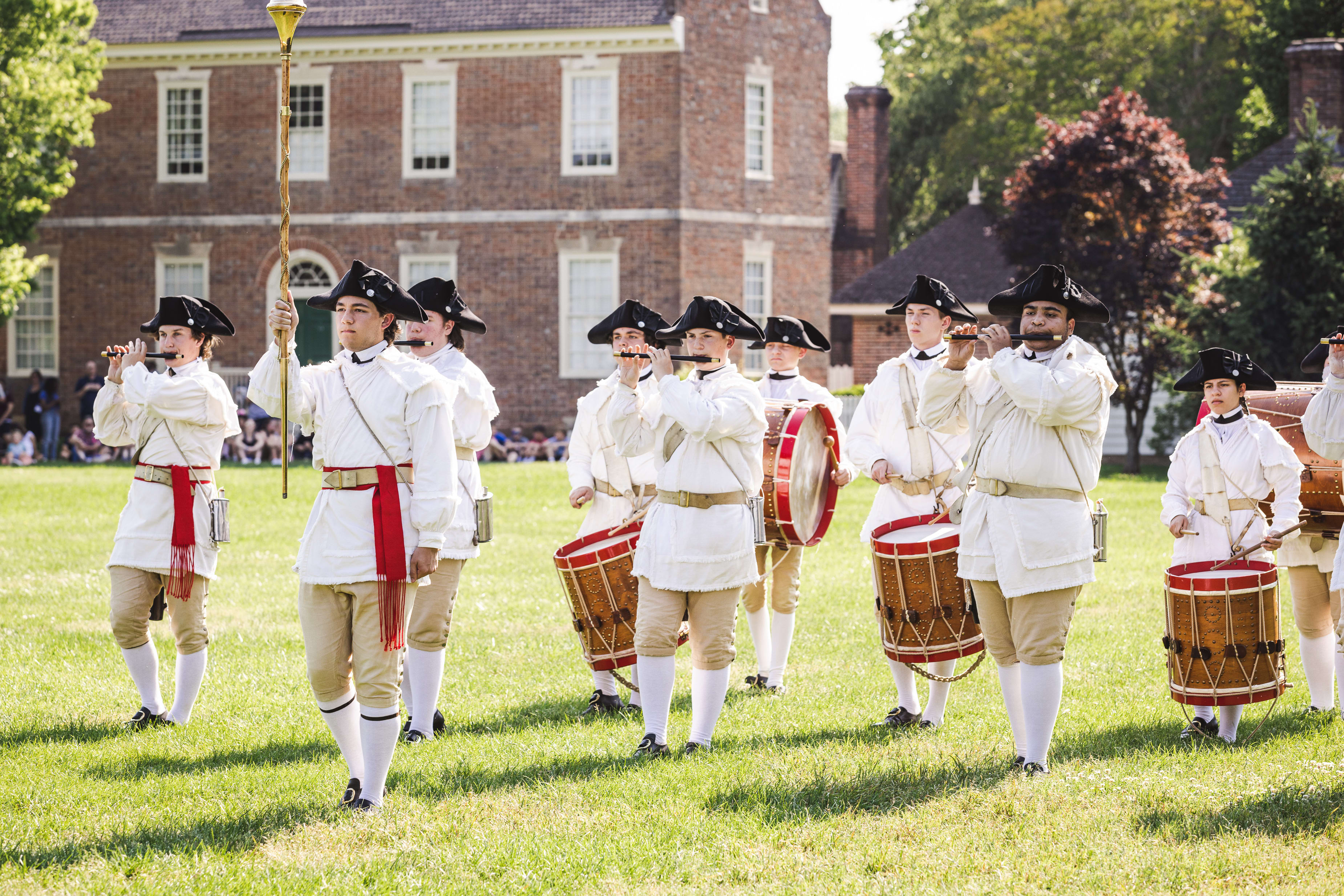
Military music, or field music, wasn’t a new concept in the 18th century. It served a vital role in a time before radio: communication. There was both a need for something loud enough to be heard over the sounds of the battlefield, as well as a tool that could communicate different messages. Fifes and drums fit these needs perfectly.
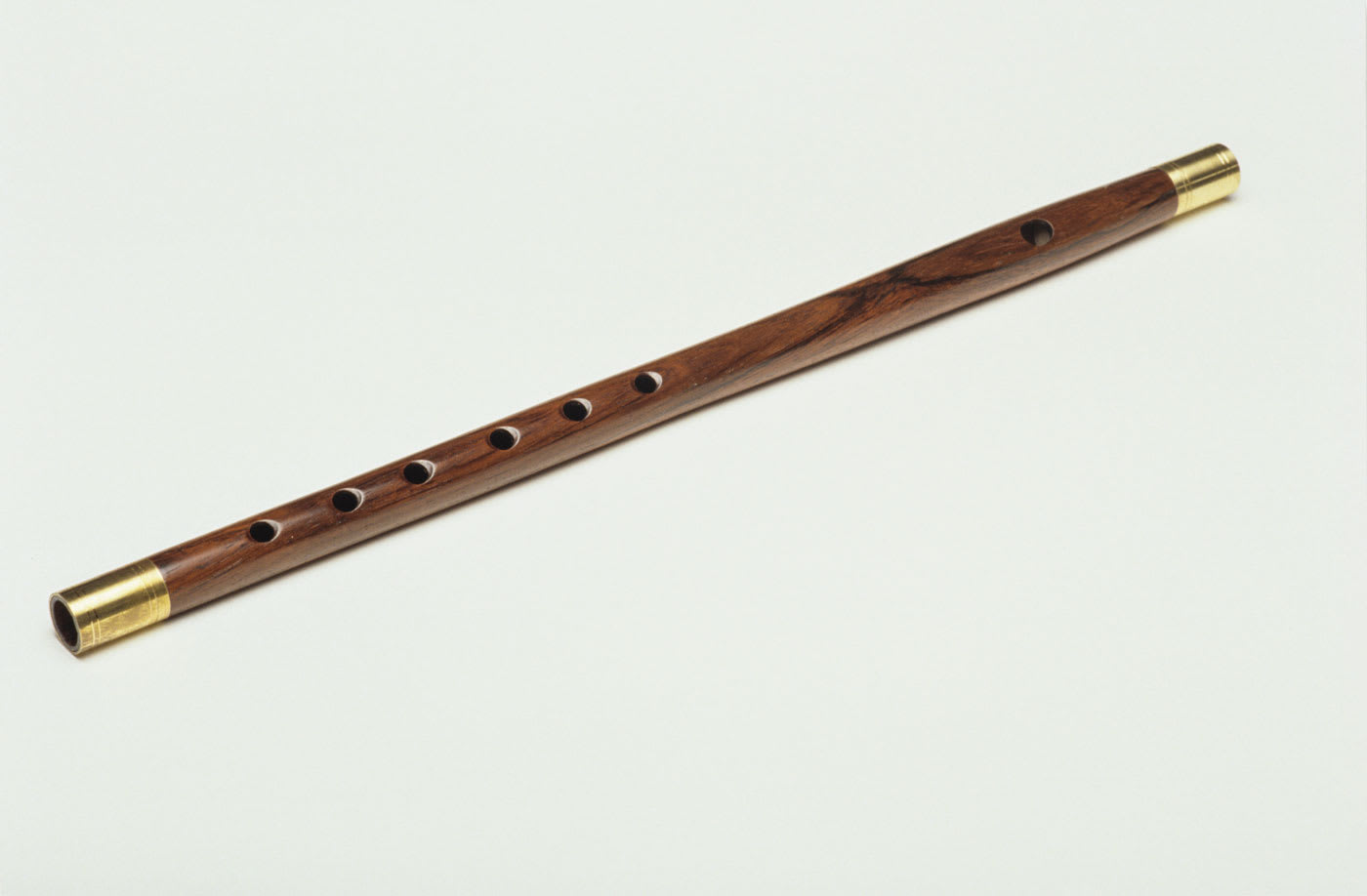
The fife is a small side-blown flute with six finger holes and is the precursor to the modern piccolo. The preferred drum for the musicians was the rope-tensioned snare drum, with the rope used to put tension on the drumheads and snares (also known as the lengths of goat intestine) on the underside to brighten the sound and ensure it was heard across the battlefield.
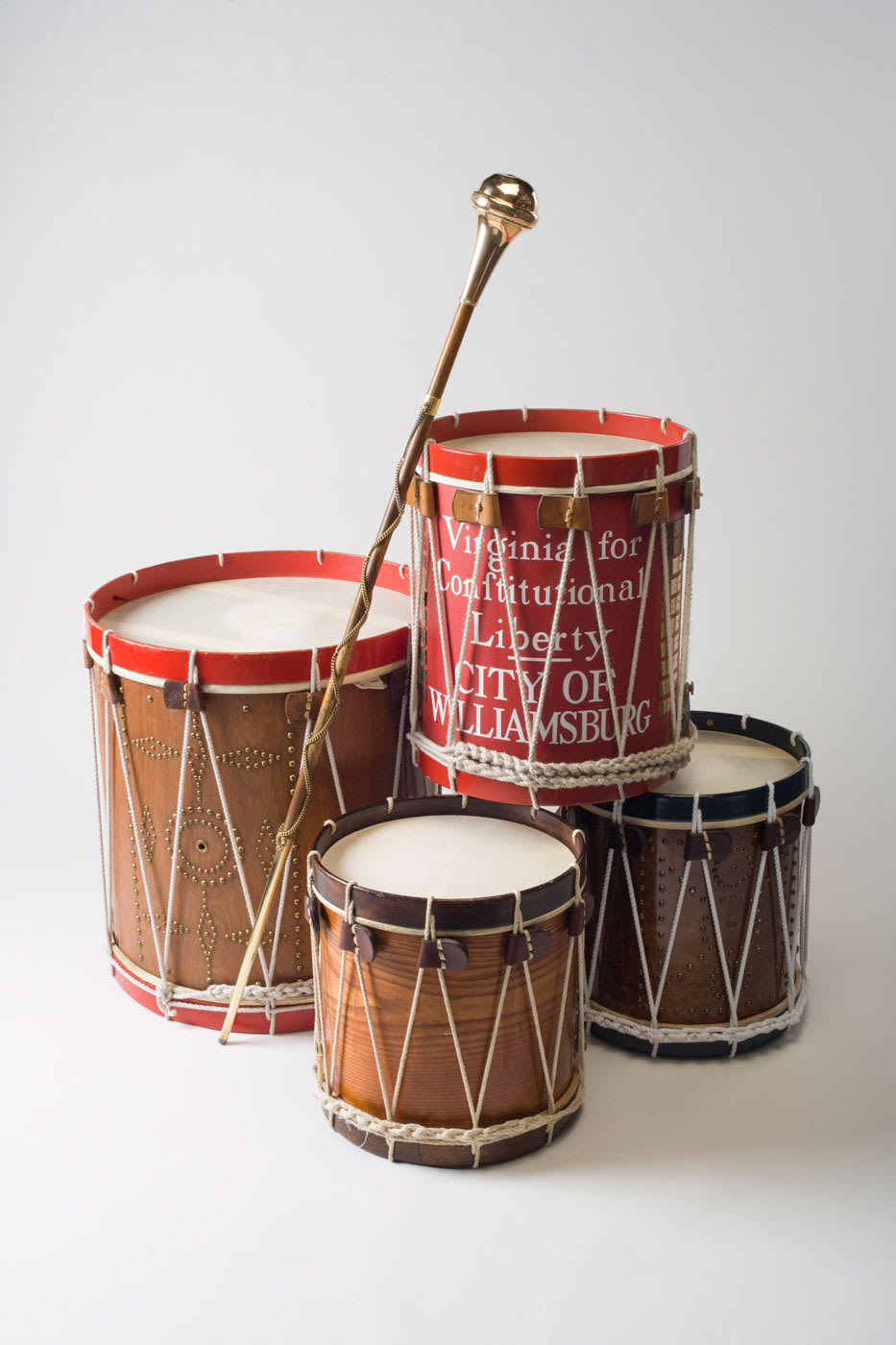
Anecdotal evidence shows that a single fife and drum can be heard up to a mile away on a clear day, making them certain to be heard across a large encampment of soldiers or an active battlefield. Different melodies or beats, called duty calls, indicated different commands to the soldiers. Everything from waking up in the morning to going to sleep at night was regulated and communicated via the fifes and drums of a regiment.
On the battlefield, musicians were stationed behind their companies and communicated the orders of the officers with their music. Below are a few examples of these duty calls, their uses, and what they sound like.
Listen to Roast Beef of Old England
Listen to Point of War
American musicians were typically dressed in the reverse colors of the soldiers they were stationed with. This was done so commanding officers could quickly find and relay orders to the musicians as well as to identify the musicians as non-combatants on the battlefield. Ideally, every company of soldiers would have a fifer and a drummer.
The regiment, a collection of eight companies, would have approximately 16 fifers and drummers total. Musicians were led by the fife or drum major, the officer appointed to teach the fifers and drummers, often teenagers or even younger children, their craft.
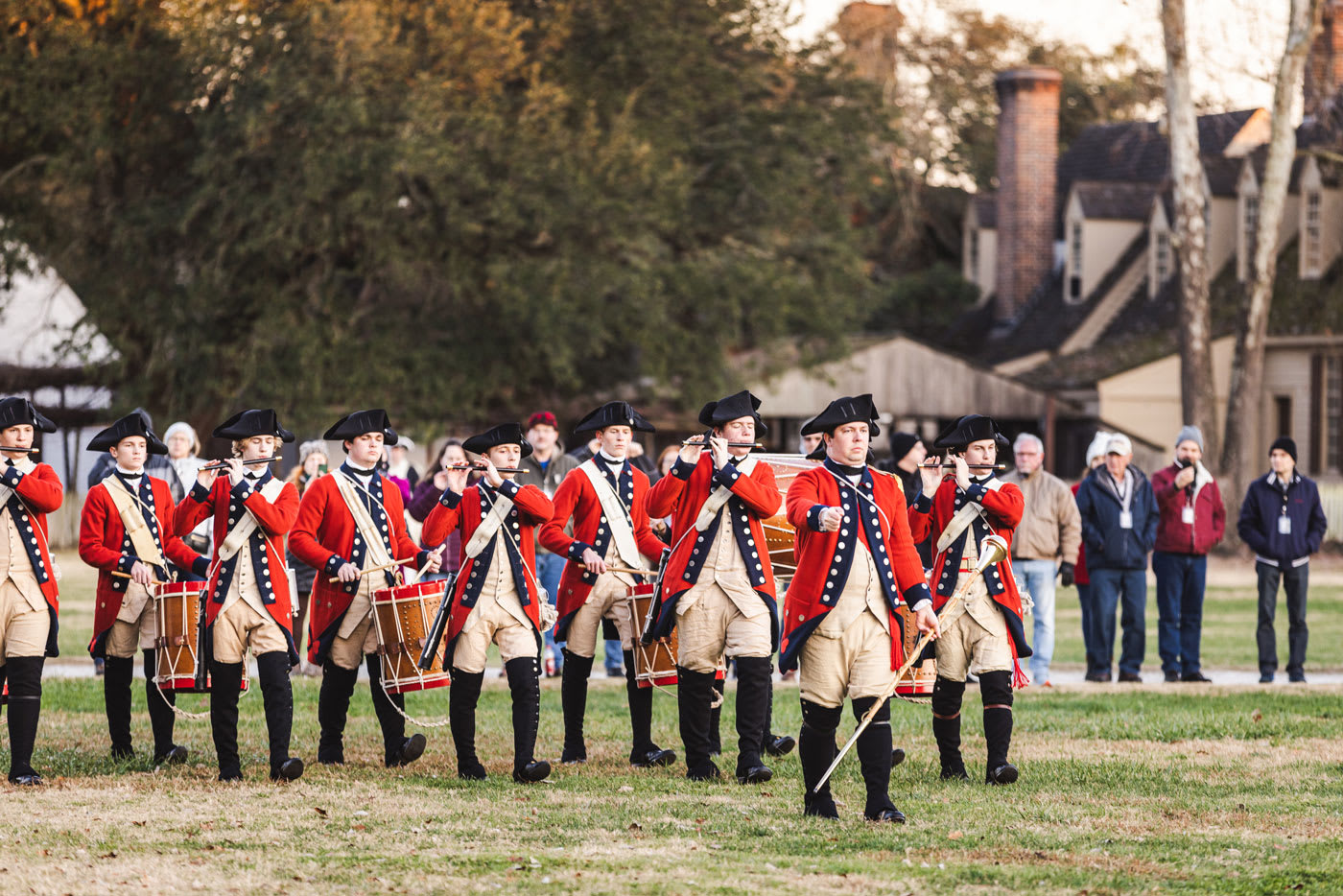
One of the most well-known juvenile musicians of the time is Thomas Nixon Jr., who was 13 when he enlisted in the Continental Army following the events at Lexington and Concord. He, like many others, enlisted with other members of his family and became a musician due to his age. His music manuscript, presumably started by another musician and gifted to a young Nixon for him to continue adding to, survives to this day and is the source of many tunes that are heard on Duke of Gloucester Street.
Drummer’s Call might be the most well-known duty call to those who grew up around a Fife and Drum Corps. This call summoned musicians to assemble and get ready to work. The Colonial Williamsburg Fifes and Drums use this same signal to invite other Fife and Drums Corps from around the country to gather and perform together in the heart of Colonial Williamsburg. It is our way to share our history and keep the tradition alive.
Listen to Drummer's Call
Rebecca Sterner is the Lead Fife Instructor of the Colonial Williamsburg Fifes and Drums. She moved to Virginia from Indiana, where she participated in 18th century reenactments since she was two months old. Despite her degree in biochemistry, she is thrilled to have found a job that combines her passions for music, libraries, history, and teaching.
Further Reading
“American Revolution Facts.” American Battlefield Trust. Accessed April 29, 2023.
Anderson, S.V. “American Music During the War for Independence 1775-1783.” Master’s thesis, University of Michigan, 1965.
“Colonel Thomas Nixon, Jr.” Framingham History Center. Accessed April 4, 2023.
Dobney, J.K. “Military Music in American and European Traditions.” The Metropolitan Museum of Art, October 2004.
